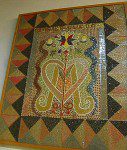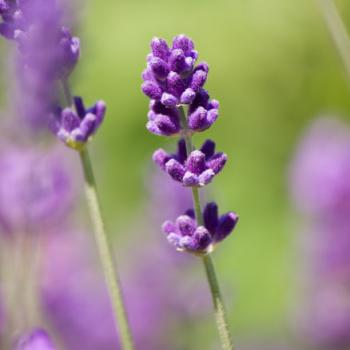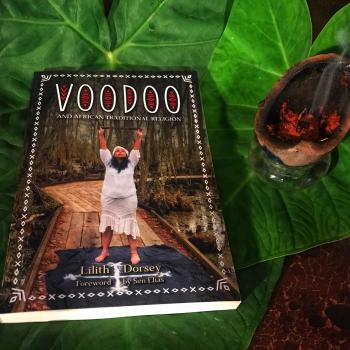
St. Joseph’s Day is March 19, a day filled with recipes and rites. In reality it is a feast for a famine. In New Orleans it is one of the most celebrated days of the year. Mardi Gras Indians take to the streets dressed in their most impressive finery.
The city also has it’s own Italian St. Joseph’s day customs that have been going on since the influx of Sicilian immigrants in the 1800’s. There are parades, altars, and even lucky fava beans. Altars created are beautiful and complex, featuring flowers, candles, medals, and food, specifically bread.
St. Joseph’s Day Recipes
Traditionally the bread that is baked is in the shape of a lily or a fish.Fava beans, or “lucky mojo beans” are particularly associated with this feast because they sustained the Sicilians throughout famine. Try to include them on your sacred table. There are lots of other dishes to make too. Catholic Cuisine gives us this St. Joseph’s day recipe for
Stuffed Artichokes alla Scilian
(Makes 2 servings)
1 artichoke
1 head (about 12 cloves) garlic, peeled and minced
1 cup parsley, finely chopped
1/2 teaspoon salt
1 teaspoon black pepper
1 teaspoon olive oil
1 lemon, sliced
3 to 4 cups water
Cut stem off artichoke and trim 1/2 inch off top of leaves. Open and spread the leaves as much as possible. Wash under faucet. Turn upside down and drain 10 minutes. Mix remaining ingredients except olive oil, lemon and water in a large bowl. Salt artichokes lightly. Spread artichoke leaves and pack stuffing between them. Pour 1 teaspoon olive oil on top of artichokes and top with lemon slice. Place artichoke upright in a pot with a tight lid. Pour 3 to 4 cups water in pot, cover, and simmer over low heat about 45 minutes. Add more water if necessary. When a leaf is easily removed, the artichoke is done. Season with additional lemon if desired.
Sicilian St. Joseph Day Frittata Recipe
6 eggs
dash of cream/ almond milk
2 handfuls, baby spinach, washed, and torn into small pieces
½ red onion, chopped
12 black olives, minced
2 potato, peeled and sliced
2 tbs. Olive Oil

This recipe is reprinted from my 2014 post. Turn on broiler. Boil 1 quart of salted water in a saucepan. Add potatoes and onion. Cook just until potatoes are tender. Drain the potato and onion mixture. Heat olive oil over medium heat in an all metal, large frying pan. Add potatoes and onion mix,then add spinach, pat down with spatula, and flip when the potatoes start to brown. Meanwhile, whisk egg together with cream, or almond milk. Sprinkle olives over frying pan vegetables, and then pour over the egg mixture. When the eggs begin to set, place the frying pan under the broiler (this is why you need a metal frying pan,) til the top gets browned, about a minute. Add salt and pepper to taste and serve to hungry people, and be sure to save some for St. Joseph as well.
St. Joseph Day Rites
At it’s core St. Joseph’s Day is, as I said, a feast to celebrate a famine, and a serious part of this feast is the altar or table. After setting your table, and leaving offering be sure to share the food. Share it with your family, friends, and if possible the poor and needy. In New Orleans this is a holiday for both Italians and the Mardi Gras Indians, who use this time to show off their ritual dress.
Even though I am not in New Orleans right now, I was very pleased to be able to spend the weekend with some Native people showing off their finery in a different way. Here’s a video clip of the amazing group A Tribe Called Red performing this weekend in NYC. Please support them on itunes and elsewhere.
If you have enjoyed what you read here, just like with your St. Joseph’s Day food, share, share, share this post ! Have a Blessed St. Joseph’s Day !


















